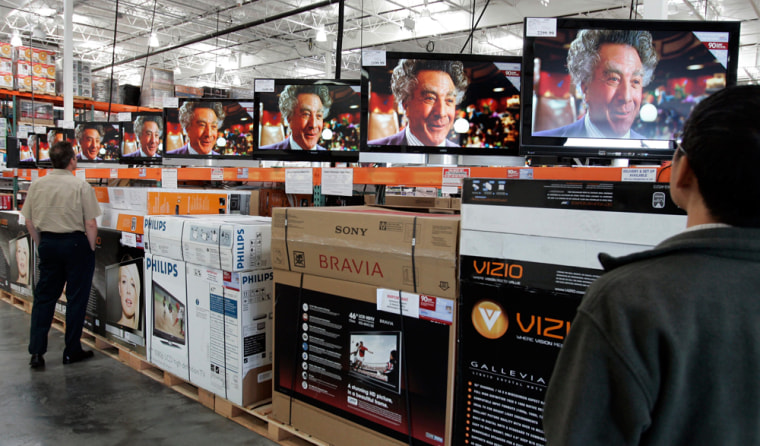Within a month, the California Energy Commission could vote on whether to impose the nation's first energy-efficiency requirements for flat-screen TVs — a mandatory standard that would likely be copied by other states.
California utilities and environmental groups are lobbying for the regulators to ban the most power-hungry televisions from stores as a way to lower electricity demand.
Some manufacturers, on the other hand, argue a mandatory power standard would hamper innovation, limit consumer choice and hurt California electronics retailers.
At a hearing Tuesday, energy commissioners acknowledged that the proposal could play a key role in reducing electricity use as consumers buy larger TVs and put more of them in their homes. It could also help California meet its 2006 global warming law, which calls for the state to cut its greenhouse gases by 25 percent by 2020.
Watching TV accounts for about 10 percent of a home's electricity use and about 2 percent of California's total electricity usage. If left unchecked, the amount of electricity used by TVs is projected to rise by 8 percent a year.
"There is no dispute TVs do consume a large amount of electricity in California," commissioner Julia Levin said.
Most new TVs below proposed bar
Under the proposed rule, all TVs sold in California starting in 2013 would have to meet recently strengthened guidelines under the federal Energy Star program. Only one-quarter of the TVs on the market currently meet the standard.
An energy-efficient TV would save a household roughly $30 per year per TV set in electricity costs. If all 35 million TVs watched in the state were replaced with more efficient sets, Californians would save $8.1 billion over 10 years, according to the Energy Commission report.
Doug Johnson, senior director of technology policy at the Consumer Electronics Association, said the commission's cost savings were overly optimistic and relied on data that fails to show the advancements made in TVs in recent years.
He also argued that the standards would leave Californians with TVs that have poorer picture quality and fewer features than those sold elsewhere in the United States.
"Such regulation undercuts innovation, it does harm consumers," Johnson said. "Voluntary efforts are succeeding without regulation."
Vizio says it's doable
At least one TV maker said it could meet the standard. Ken Lowe, president of Vizio Inc., the largest seller of flat screens, said technology already on the market to adjust a screen's brightness was one way manufacturers could bring down the amount of power used by TV sets.
Representatives for several utilities said the standard would head off steep increases in home electricity use.
"The utilities firmly believe it's important not only to have a carrot, but a floor in order to bring up those products that are inefficient in the market," said Gary Fernstrom, a program engineer at Pacific Gas & Electric.
Environmentalists also praised the proposal. "The goal here is a simple one," Noah Horowitz, a senior scientist at the Natural Resources Defense Council, told commissioners. "We want to ensure that every TV sold in California is an efficient one."
